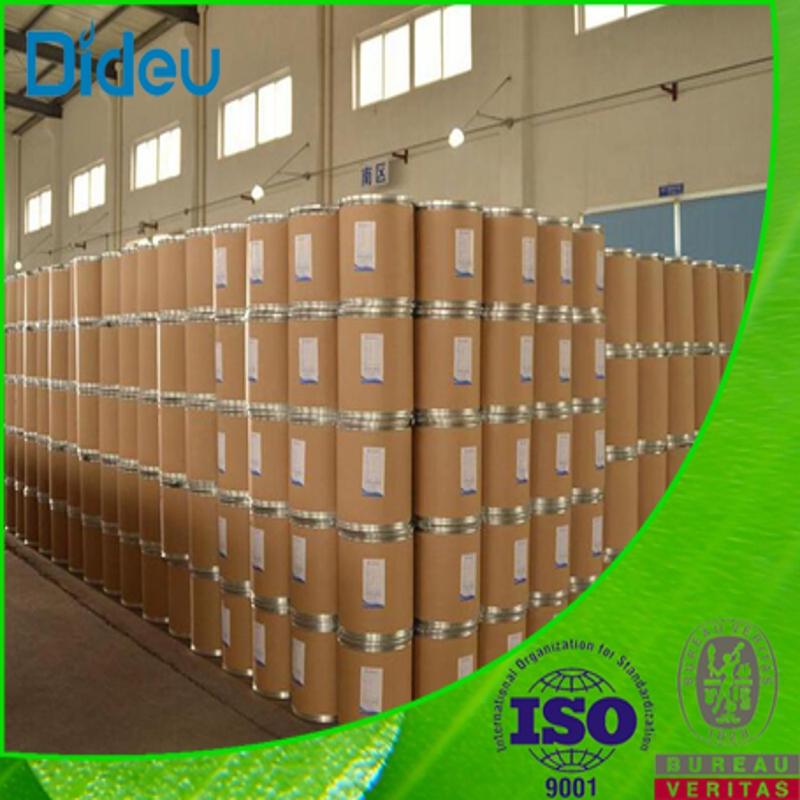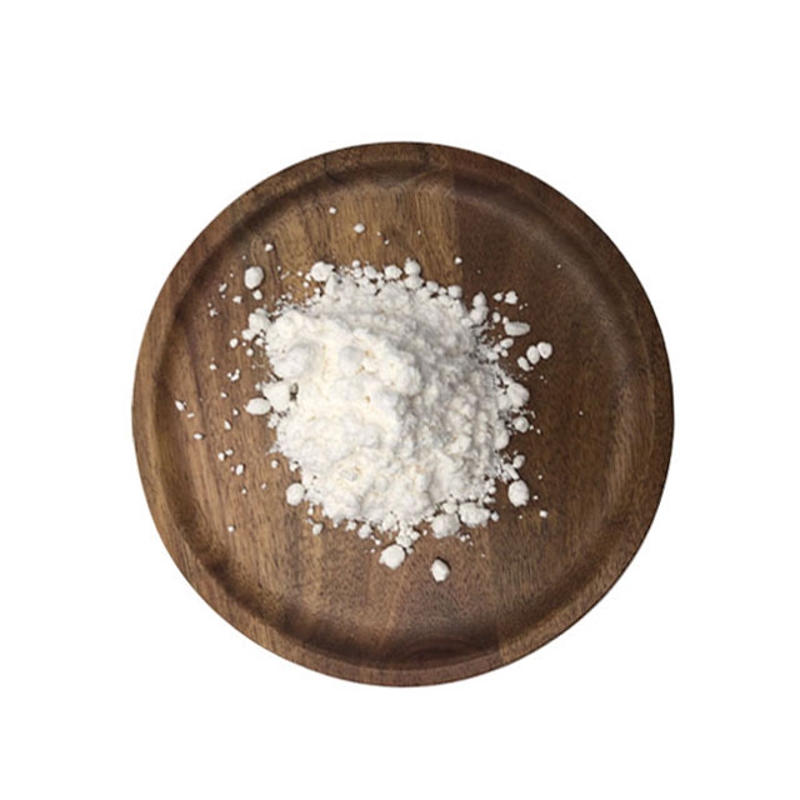-
Categories
-
Pharmaceutical Intermediates
-
Active Pharmaceutical Ingredients
-
Food Additives
- Industrial Coatings
- Agrochemicals
- Dyes and Pigments
- Surfactant
- Flavors and Fragrances
- Chemical Reagents
- Catalyst and Auxiliary
- Natural Products
- Inorganic Chemistry
-
Organic Chemistry
-
Biochemical Engineering
- Analytical Chemistry
-
Cosmetic Ingredient
- Water Treatment Chemical
-
Pharmaceutical Intermediates
Promotion
ECHEMI Mall
Wholesale
Weekly Price
Exhibition
News
-
Trade Service
In recent years, with the deepening of
.
Chemotherapy, endocrine therapy, immunotherapy, targeted therapy.
.
.
Every innovation in the era of drugs brings more confidence and hope
to clinicians and patients.
At present, the research and application of cytotoxic drugs and antibody drug conjugates (ADCs) conjugated with monoclonal antibodies have become a hot spot in the field of precision treatment of breast cancer, especially
of ADC treatment for breast cancer in China.
With the continuous emergence of various ADC drugs, their safety issues have also received more and more attention
.
Professor Xu Ling of Peking University First Hospital and Professor Wang Tao of the Fifth Medical Center of PLA General Hospital as panelists to discuss the selection and application of breast cancer ADC drugs from the perspective of drug safety
.
Q1: In recent years, a lot of progress has been made in the field of breast cancer treatment, and ADC drugs deserve to become the most potential "stars"
in the history of anti-HER2 therapy.
Could you please talk about the importance of ADC drugs in the treatment of breast cancer based on the mechanism of action, research progress and clinical application of ADC drugs?
Professor Wang Tao: ADC drugs are a class of anti-tumor innovative drugs with a unique mechanism of action, which conjugate target-specific monoclonal antibodies with highly lethal cytotoxic drugs through specific linkers, and rely on monoclonal antibodies as a carrier to accurately and efficiently transport cytotoxic drugs to target cancer cells for "targeted" killing, which is known as "biological missiles"
.
Therefore, ADC drugs have the advantages of targeting, high stability and high anti-tumor activity, which is conducive to the realization of more accurate treatment
of tumors.
We know that compared with other molecular subtypes, HER2-positive breast cancer patients have a relatively worse prognosis, and although traditional anti-HER2 therapeutics, including macromolecular antibody drugs and small molecule tyrosine kinase inhibitor (TKI) drugs, bring significant benefits to HER2-positive breast cancer patients, there are still some patients who will face drug resistance or recurrence, and the emergence of ADC drugs provides more effective treatment options for these patients and fills the unmet
。
In the field of anti-HER2, the ADC drugs currently on the market mainly include T-DM1 and DS-8201, while only T-DM1
is available in China.
T-DM1 is the first ADC drug approved in the field of solid tumors and the first ADC drug
used in anti-HER2 therapy for breast cancer.
As early as February 2013, T-DM1 has been approved by the FDA for marketing
.
In 2020, the indication for HER2-positive adjuvant therapy for early breast cancer was approved in China, and T-DM1 became the first approved ADC drug
in China.
In 2021, T-DM1 was approved for a new indication for second-line treatment of HER2-positive advanced breast cancer
.
In the EMILIA study1,2, T-DM1 significantly prolongs median progression-free survival (mPFS, 9.
6 months vs.
6.
4 months, HR=0.
65, P<0.
001) and median overall survival (mOS, 30.
9 months vs.
mOS, 30.
9 months) compared with
At 25.
1 months, HR = 0.
68, P <0.
001), the risk of death was significantly reduced by 32%.
So, this study establishes the standard position
of T-DM1 in the second-line treatment of HER2-positive advanced breast cancer.
In fact, I think that T-DM1 is more significant in the early stage, because patients are more likely to achieve cure
in early breast cancer treatment.
For such patients with poor prognosis, KATHERINE STUDY3 confirmed that T-DM1-adjuvant intensive therapy can significantly improve the non-invasive disease survival (iDFS) of these patients, bringing the chance of cure to more HER2-positive early breast cancer patients.
T-DM1 has also become the standard regimen
for adjuvant intensive therapy for non-pCR patients following neoadjuvant therapy for HER2-positive breast cancer.
At present, for the application of T-DM1, T-DM1 has accumulated very rich experience at home and abroad, whether in HER2-positive advanced breast cancer or HER2-positive early breast cancer, T-DM1 has shown good results
.
Figure 1 PFS results in EMILIA study
FIGURE 2 OS results in EMILIA study
FIGURE 3 iDFS results from the KATHERINE study
Professor Yuan Peng: Professor Wang's views are particularly in line with our clinical practice, ADC drugs play an increasingly important role in the treatment of breast cancer, multi-dimensional to meet part of the clinical needs, I believe that more and more ADC drugs can bring better treatment results for patients
.
Q2: While ADC drugs bring efficacy and survival benefits, their safety issues have also attracted much attention
.
We know that paying attention to the management of adverse reactions can improve patient compliance, effectively improve the survival prognosis of patients, and escort ADC treatment
.
What are the adverse effects of ADC drugs that clinicians need to be concerned about? How to deal with these adverse reactions, and what are the specific coping strategies?
Professor Xu Ling: As a new type of targeted drug, ADC drug not only brings tangible clinical benefits to patients, but also the overall adverse reactions are preventable and controllable
.
The adverse response spectrum of different ADC drugs is not completely consistent, mainly because:
(1) Use different antibodies for conjugation against different receptors;
(2) Carrying different chemotherapy drugs;
(3) The connection method of the linker is different;
(4) The ratio of antibodies/drugs, homogeneity, etc.
are different
.
At present, the ADC drug with the best access in China is T-DM1, and there will be DS-8201, Trop2 and so on
in the future.
IN THE CASE OF T-DM1, THE MOST COMMON ADVERSE REACTION WAS THROMBOCYTOPENIA, AND EARLY KATHERINE STUDY3, AND LATE EMILIA STUDY1,2,2 TH3RESA STUDY4 AND KAMILLA STUDY 5 PROVIDED A LOT OF RELEVANT DATA
.
Overall, the incidence of T-DM1 thrombocytopenia is about 29%~31%, but the incidence of grade 3 thrombocytopenia in ≥ is relatively low6
.
In the treatment of thrombocytopenia, there is currently an "expert consensus on the clinical management of thrombocytopenia associated with tumor treatment" 7 can be referenced, according to the guideline recommendations, for patients with
, so that the trough of the patient's platelets is not too low, and the body can recover faster.
So as to ensure the treatment cycle of ADC drugs, improve the treatment compliance of patients, and ensure the efficacy
of drugs.
In addition to thrombocytopenia, the adverse reactions of T-DM1 also include liver function damage, infusion-related reactions, etc.
, for these common adverse reactions, clinicians have relatively rich experience to deal with and deal with
.
Fig.
4 Routine symptomatic management of thrombocytopenia associated with ADC treatment6
For other ADC drugs, we need to pay attention to different types of adverse reactions, such as
.
It is believed that with the increasing number of clinical trial data related to ADC drugs, the accessibility will become better and better, we will have a deeper understanding of the adverse reactions of different ADC drugs, and we will get more guidance
in the clinical drug process.
Professor Yuan: As Professor Xu said, the overall adverse reactions of ADC drugs are much
lighter than those of conventional chemotherapy drugs.
In the EMILIA study1,2, T-DM1 had fewer adverse reactions such as gastrointestinal reactions,
than conventional chemotherapy 。 In addition, for other ADC drugs, clinicians should also actively pay attention to special adverse reactions, especially some ocular toxicity, interstitial pneumonia, etc.
, clinicians to do a good job in the monitoring and management of adverse reactions, to improve the patient's treatment compliance, to ensure the treatment efficacy is very important
.
Q3: With the increasing application of ADC drugs in the field of breast cancer, the safety management of ADC drugs has received more and more attention
.
We know that the "Chinese Expert Consensus on the Safety Management of Breast Cancer Antibody Drug Conjugates" has just been published in the Chinese Journal of Oncology in September, can you please talk about the background, purpose and main content of this consensus, and what new guidance will it bring to clinicians?
Professor Xu Ling: First of all, ADC drugs are different from individual antibodies and different from separate cytotoxic drugs, and their adverse reaction spectrum is different from conventional drugs, so we need to understand the adverse reactions
of such new drugs.
Secondly, as Professor Wang mentioned, the efficacy of such drugs is remarkable, the future application space is very broad, as the accessibility of ADC drugs is getting better and better, the good management of adverse drug reactions is also the content that clinicians need to master, based on this background, Academician
。
The advantage of this consensus is based on a large amount of evidence-based medical evidence, which elaborates
the characteristics of various ADC drugs, the clinical features, pathogenesis, monitoring and management of adverse reactions, and the medication guidance of different ADC drugs in the label.
Clinicians can personalize the selection of therapeutic drugs suitable for patients based on the basic situation of patients and referring to the comparison of different ADC drugs
in the consensus content.
For example, the patient's own gastrointestinal function is not good, and drugs with obvious side effects such as
avoided.
With the vigorous development of ADC drugs, a large number of ADC drugs will continue to emerge at home and abroad, so the introduction of this consensus can be said to be timely, and in the future, with the increase and enrichment of understanding and clinical research data, the consensus will be constantly updated
.
Professor Yuan Peng: The emergence of this consensus is necessary and important, and the timeliness is timely
.
Through such a consensus, the adverse reactions and management information of various ADC drugs are compared horizontally and presented in the form of tables, so that everyone can see at a glance, which not only saves clinicians the time to compare different drug information, but also helps clinicians make more accurate drug choices
in clinical practice.
Q4: A good understanding of the safety of ADC drugs is critical
to selecting appropriate breast cancer treatment strategies to maximize patient benefits.
Based on clinical research data and clinical practice, from the perspective of drug safety, how to select and apply ADC drugs in breast cancer treatment?
Professor Wang Tao: It is a three-point poison of medicine, any drug is toxic, how to balance the efficacy and safety management, let good drugs play their role, so that the toxicity is reduced as much as possible, is an art
of clinicians to use drugs.
First of all, for patients, guaranteeing the effectiveness of the drug is the most basic
.
Many important studies have demonstrated the efficacy
of ADC drugs.
At present, in clinical practice, for patients who have failed advanced first-line therapy, ADC drugs such as T-DM1 will be preferred for second-line treatment; For breast cancer patients with non-pCR following anti-HER2 neoadjuvant therapy, adjuvant T-DM1 intensive therapy
is performed.
Secondly, in the process of medication, it is also necessary to manage
the adverse reactions of drugs according to certain clinical experience.
At the same time, patient education is also very important, for example, we need to tell patients when to review and which tests
to do.
Finally, for the occurrence of adverse reactions, we must have foresight, be able to foresee what problems may occur, pay close attention, and facilitate timely treatment
.
Regarding thrombocytopenia, there are very detailed guidelines for relevant consensus, including the use of TPO,
.
For some patients with underlying lung diseases, we must be cautious when choosing drugs, and timely lung CT and other related examinations
should be carried out during treatment.
To sum up, on the one hand, we need to learn what advantages ADC drugs have and what adverse reactions we need to pay attention to; On the other hand, it is necessary to accumulate experience and learn from experienced experts
.
Professor Yuan Peng: Knowing oneself and knowing one's opponent is not only a battle, but also a war against tumors
.
Only by fully understanding the efficacy advantages and adverse reaction characteristics of ADC drugs, and finding the balance between the two, can patients truly benefit from it and achieve the ultimate victory
.
Q5: ADC drug clinical research results are changing with each passing day, as more and more ADC drugs are applied to the clinic, please talk about the development trend and research and development direction of ADC drugs in the future, and what are your expectations for the future development of ADC drugs in China?
Professor Xu Ling: We still have great expectations for future ADC drugs
.
Whether it is from the perspective of the drug mechanism of ADC drugs or pharmaceutical processes, there may be more improvements in the future, such as linker problems, toxin-carrying homogeneity, and even now ADC drugs are mainly based on antibodies as targets, whether there are small molecule peptides or other bispecific antibodies in the future, these are the directions
worth developing in the future.
Professor Wang Tao: In addition to the advantages of further improving ADC drugs mentioned by Professor Xu, I think that ADC drugs are still mainly based on single-drug treatment, and the combination of multiple drugs is also the direction of future development.
T-DM1-based combination therapy studies are now underway, such as the KATE3 and Astefania studies for combination immunotherapy, and the COMPASSHER2 RD study
for TKI.
In addition, ADC drugs in combination with endocrine drugs, and other target drugs such as PI3K inhibitors or AKT inhibitors are also worth further exploration
.
Of course, adverse reactions may increase after drug combination, and problems such as how to manage and how to adjust the dose of drugs also need to be continuously solved and overcome
.
Figure 5 KATE3 study design
Figure 6 Astefania study design
Professor Yuan Peng: From the sharing of the two professors, we can see that the field of anti-HER2 therapy for breast cancer has opened the ADC era, as the tide of the ADC era, can you please the two professors express your expectations for the future ADC era in one sentence or one word?
Professor Xu Ling: In fact, we have made great progress in the field of anti-HER2 treatment for breast cancer, and I hope to create another brilliant
future for ADC drugs.
Professor Wang Tao: We look forward to the day when ADC drugs will finally solve the tumor problem
.
Professor Yuan Peng: I think ADC drugs can be expected in the future, and I hope that ADC drugs will bring better prospects
to our breast cancer patients in the future.
(Click to view the full video of this issue of the famous café living room)
Expert profiles
References:
1.
Verma S, et al.
N Engl J Med.
2012 Nov 8; 367(19):1783-91.
2.
Diéras V, et al.
Lancet Oncol.
2017 Jun; 18(6):732-742.
3.
von Minckwitz G, et al.
N Engl J Med.
2019 Feb 14; 380(7):617-628.
4.
Krop IE, et al.
Lancet Oncol.
2017 Jun; 18(6):743-754.
5.
Carlos H, et al.
ASCO 2017.
Abstract 1033P.
6.
Breast Cancer Group, Oncologist Branch of Chinese Medical Doctor Association, et al.
Chinese Journal of Oncology, 2022, 44(9):913-927.
7.
Oncology Support Rehabilitation Group, Oncology Branch of Chinese Medical Association, et al.
Oncology, 2021, 41(12):812-827.
8.
Hurvitz S et al.
SABCS 2021.
Abstract GS3-01.







